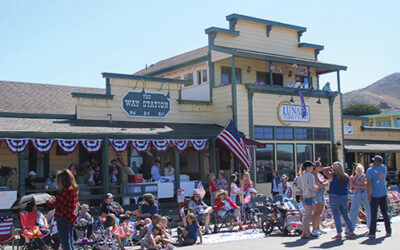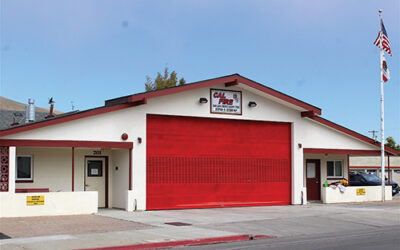Morro Bay residents having trouble paying water and sewer bills who are taking advantage of a City discount program, recently had the discounts more than doubled and extended in time.
The City Council voted unanimously on Sept. 22 to increase the City’s “COVID-19 Utility Discount Program” from 10% to 25% for customers that qualify and to extend the discounts to the end of June 2021.
They also upped a rebate program for people living in mobile home parks and apartment complexes.
The City’s income qualifications are tied to Pacific Gas & Electric’s “CARES Program,” which gives customers discounts base on their incomes. If someone qualifies for CARESS discount, they qualify for the City’s.
According to a staff report, the City has 280 customers on the discount program, and 17 who live in mobile home parks or apartments (under the Utility Rebate Program).
The City has amassed some $580,000 in its discount fund, which comes out of the revenues from the Water Reclamation Facility or WRF surcharges.
The City charges a $41 a month surcharge for residences specifically for the WRF project, on top of the normal costs based on usage. The rates pencil out to about $191 a month for customers who use up to 5 units of water (a unit is 750 gallons).
The Rebate Program was at $12.50 month or $150 a year, and has been increased to $180 a year ($15 a month).
The discount programs came into focus with the advent of the Coronavirus Pandemic response in March, and the City Council quickly approved extending the utility discount program to anyone who was laid off from work by the shelter-at-home orders, and the shutdown of all “non-essential” businesses.
That discount expansion actually expired at the end of June 2020 and the Council’s vote extends it through the end of June 2021. The discounts would reduce back down to 10% next July, unless extended further.
The WRF surcharges totaled some $3.7 million in fiscal year 2019-20, according to a staff report. The water surcharges brought in $1.55 million and the larger sewer portion $2.17M but those tallies were actually under budget for what had been anticipated at the start of the fiscal year in July 2019. The report pegs the coronavirus as the cause.
“The collection amount is less than budgeted,” according to the report, “by approximately $100,000, and staff believes this is due to lower than expected water usage in the commercial sector resulting from businesses closing their doors for portions of the year related to COIVD-19. The WRF surcharge for commercial accounts varies depending on usage as opposed to the flat rate that was established for residential accounts.”
Under the WRF project parameters, the City staff is supposed to analyze the revenues every year with an eye at possibly lowering rates, but they hadn’t completed that study before the Sept. 22 meeting.
“The thinking at that time,” according to the report, “was the City adopted the WRF surcharge with a set of assumptions [project costs, interest rates and durations of loans, use of cash reserves, revenue generation, etc.], that may change to the benefit of the water and sewer customers as the project progresses. As the project proceeds, new factors may come to light that differ from assumptions that were made when the WRF surcharge structure was developed.”
Indeed, already there have been dozens of change orders just to the treatment plant’s construction contract pushing those costs to over $70 million.
Also, bids on the conveyance system part of the project came in high. The City’s engineer’s estimate for that portion was $24 million (with a $3 million contingency for a total of $27M).
But the lowest bid out of five was Anvil Builders, Inc., of San Francisco at $31.4 million.
Still, because of the 0.83% interest rate on a loan of $62 million the City got from the Federal Environmental Protection Agency’s “Water Infrastructure Finance and Innovation Act” or WIFIA loan program, the overruns have been absorbed within the project’s contingency funds.
“The City assumed it would secure the WIFIA loan at 3.25% when the WRF surcharge structure was developed,” the report said. “That interest rate difference saves the City and ratepayers approximately $800,000 to $900,000 a year in debt payments over the life of the WIFIA loan, a substantial savings.”
Also, the City is still working on getting a loan from the State’s Revolving Loan Fund. It’s been approved for a $5 million grant that doesn’t have to be repaid, and up to $100 million in loans to complete the project.
The actual amount they will borrow has not been set yet, but, “Staff remains hopeful that once we secure the SRF funding, we can revisit the financial analysis and potentially offer longer term water and sewer rate savings to all our community members. Securing SRF funding will help further reduce debt payments compared to assumptions that were made in developing the water and sewer rates. Staff will complete the rate review once the SRF funding is secured and provide recommendations to Council at that time [likely in Spring 2021].”


